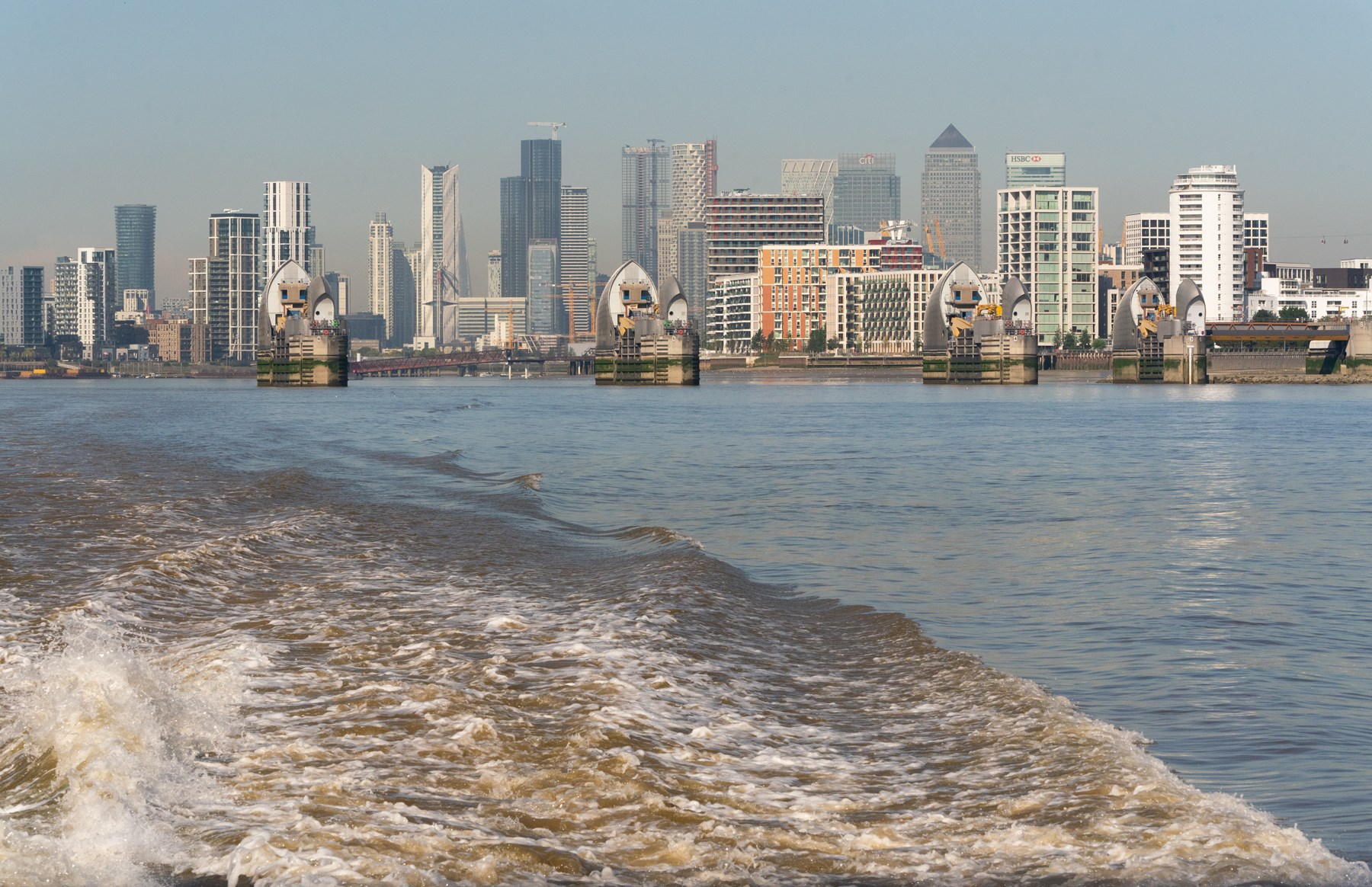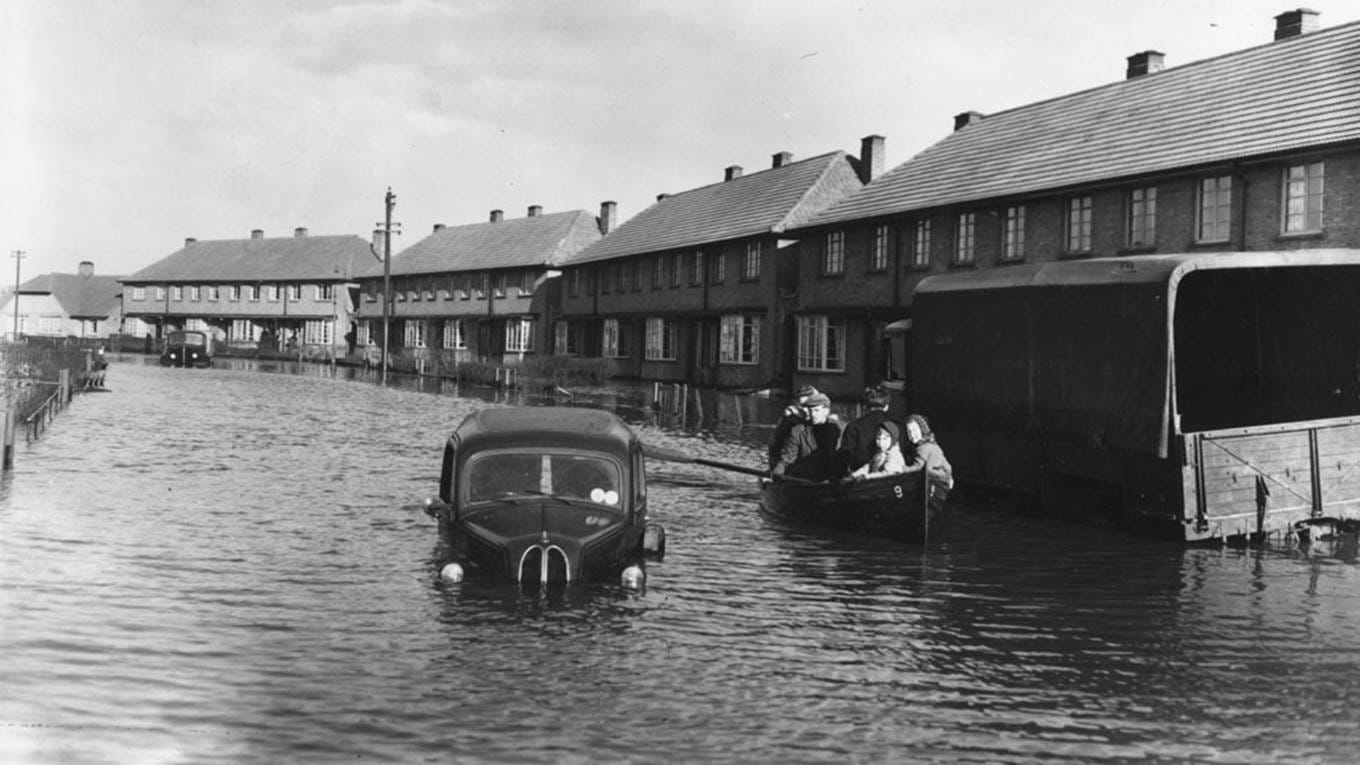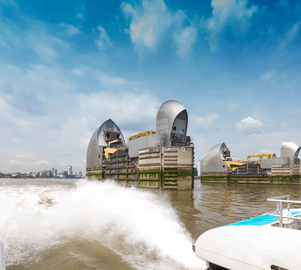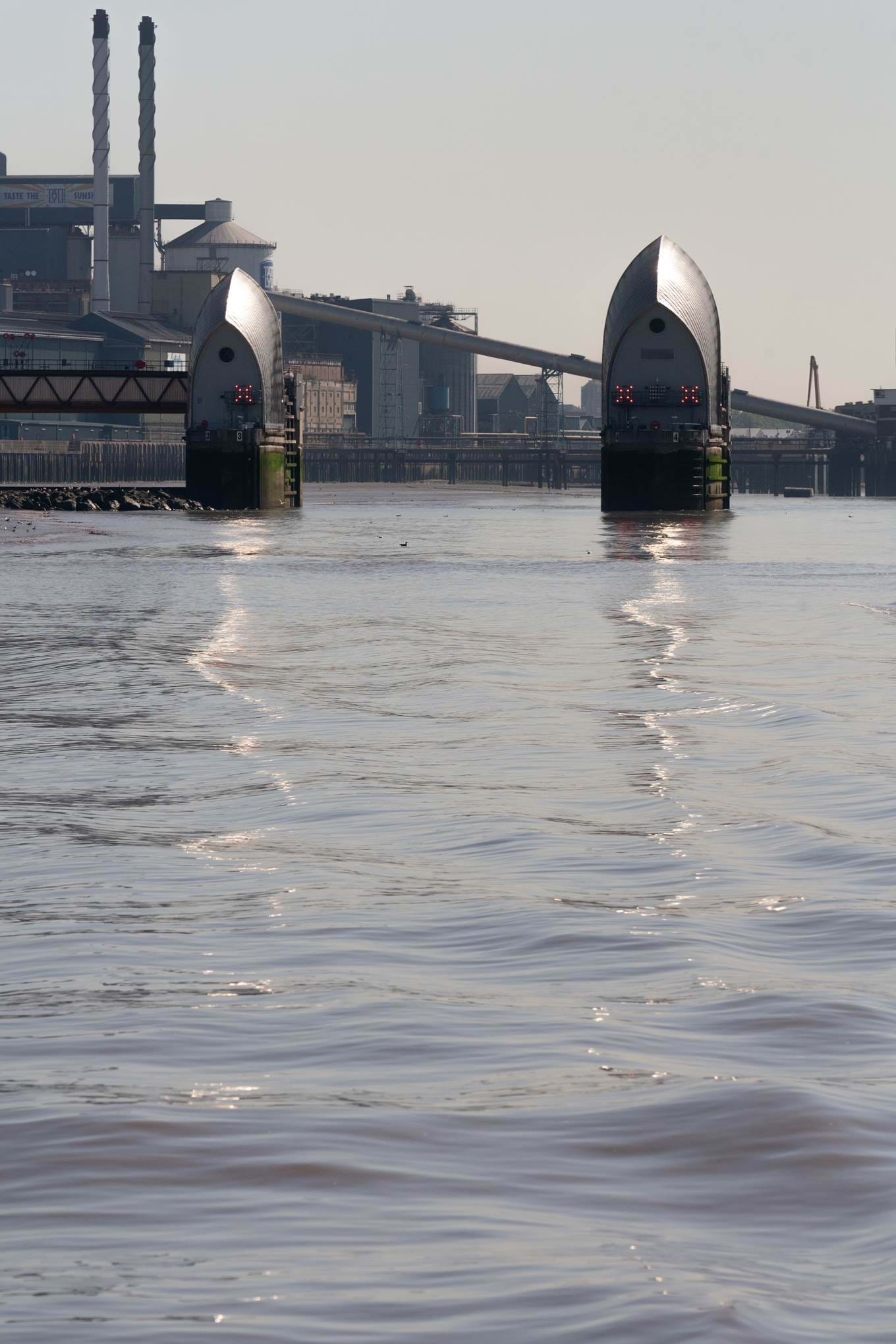
If you’ve heard of the Thames Barrier but you’re not exactly sure what it is, or if you know what it is but you’d like to know more about it, you’ve come to the right place.
In this article, discover everything you need to know about the Thames Barrier, how it works, and how to sail through with Uber Boat by Thames Clippers.
The Backstory
Having been built on a floodplain, large parts of London suffered significant flooding a fair few times during the 20th century. In 1928, 14 people drowned when the Thames overflowed and flooded much of central London. During the North Sea flood of 1953, hundreds of people lost their lives in the UK, and thousands were forced to evacuate their flood-damaged homes, including in East London.
Eventually, people began calling for a long-term solution to protect the capital city from future floods, as building higher and stronger walls and embankments would eventually hide the Thames. In 1974, construction of the Thames Barrier began as research had shown that a barrier with movable gates across the Thames would be the best option.

What is the Thames Barrier?
Spanning 520 metres across the River Thames near Woolwich, the Thames Barrier is the second-largest retractable flood defence barrier in the world (the largest is the Oosterscheldekering Barrier in the Netherlands).
The Thames Barrier took 8 years to build, and it became fully operational in 1984 – with the late Queen Elizabeth II presiding over its official opening.
The barrier has 10 steel gates that, when raised, are about as high as a 5-storey building. These 10 gates essentially divide the river into 10 individual flood gates, with each gate weighing approximately 3000 tonnes – a truly remarkable feat of engineering!
What does the Thames Barrier do?
Essentially, the Thames Barrier protects 125 square kilometres of central London from floods caused by high tides and storm surges.
When tides are forecast to be high enough to pose a potential threat (often during springtime), all 10 of the barrier’s steel gates are raised (closed) so that they can hold back the excess tidal flow and reduce the risk of flooding.
The barrier is usually closed about 8 or 9 hours before high tide, while traffic signals and online updates are used to notify river traffic of the closure.

How does the Thames Barrier work?
Each of the 10 gates that make up the Thames Barrier is designed to withstand an overall load of about 9,000 tonnes of water.
When the barrier is fully raised, it creates a solid steel wall that stops water from flowing upstream toward the city.
Each individual gate can be closed within about 10 minutes, but it takes about an hour and a half to completely close the entire barrier.
Once the water level upstream of the barrier matches the water level downstream, the barrier can then be reopened, allowing river traffic to pass through once again.
A test closure of the Thames Barrier is scheduled every month.
Visit the Thames Barrier with Uber Boat by Thames Clippers
Want to know how to get to the Thames Barrier so you can see it up close and personal? Uber Boat by Thames Clippers pass through the Thames Barrier on services to/from Woolwich (Royal Arsenal) and Barking Riverside piers. However, when the barrier is closed to prevent flooding or for tests, our services are unable to go through but you can take the boat to Royal Wharf Pier, from there or from the Thames Barrier Park you will get a great view of the Thames Barrier.
As well as being able to see the Thames Barrier when travelling with Uber Boat by Thames Clippers, the barrier itself has an information centre, where you can find out more about the past, present and future of this iconic blockade.
Be sure to check out the Thames Barrier’s scheduled closures before planning your trip.
